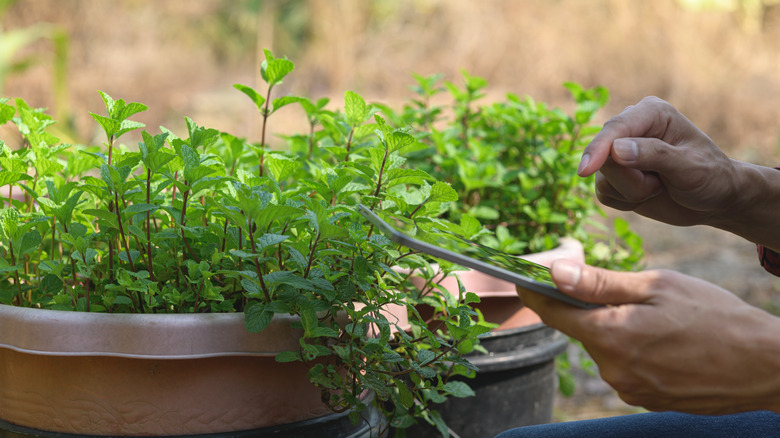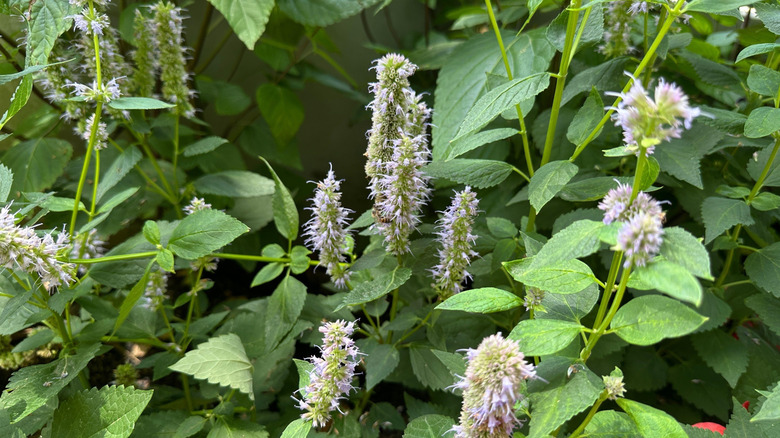The Easy Trick To Spot Plants In The Mint Family
If you've just moved into a new house and there's an established garden, you're probably going to be presented with a variety of plants that you may not be familiar with. Identifying what is already growing in your yard will help you to understand each plant's needs, and also work out what you want to keep and what you would be better off getting rid of. As you're most likely aware, all plants that grow around the world belong to different families. They're grouped this way because they share certain characteristics. Such is the case with the mint family (Lamiaceae). If you come across a minty fragranced plant in your yard, you can be pretty sure it belongs to the mint family. In fact, there's an easy trick to remember that allows you to check whether that mystery plant is definitely in the mint family: square stems.
The mint family contains more than 200 different species, including all the aromatic mint plants as well as a range of other herbs like rosemary (Salvia rosmarinus), sage (Salvia officinalis), marjoram (Origanum majorana), oregano (Origanum vulgare), thyme (Thymus vulgaris), and even lavender (Lavandula angustifolia). While most of these are popular garden plants, the Lamiaceae family also contains weedy plants such as deadnettle and creeping charlie. It's important to note that there are downsides to growing mint that you should be aware of as, like their weedy cousins, these plants can be quite aggressive and take over your garden if you're not careful. That's why many savvy gardeners prefer to grow these herbs in pots.
Distinctive characteristics of mint plants
The most common way to distinguish mint plants from other species growing in your garden is by their strong or spicy aroma, which can also be said about many other plants in the Lamiaceae family. The next thing to look for are the square stems commonly found on many, but not all, members of the mint family. Many popular herbs, such as mint, rosemary, and lavender, have those characteristic square stems, as well as a number of perennial plants that will last for decades, like catmint (Nepeta racemosa) and beebalm (Monarda).
One other distinguishing feature of plants in the mint family is that their leaves are typically arranged opposite each other on the square stems. You'll also find that the leaves are often hairy and if you touch them, you'll end up with some essential oils on your fingers. If you take a closer look at the flowers, you'll see that they are in two parts (with two lips) but totally symmetrical. The flowers themselves are also often seen on a raceme or cyme. This is basically a long flowering stem with the individual blooms on small stalks along it. Now that you know how to identify them in your garden, you'll want to discover how to keep your mint plants happy and healthy during winter. Just a note of caution: Before you consume any plant you find in your garden, if you're not certain of its correct identification, take a sample to your local extension office for clarification.

